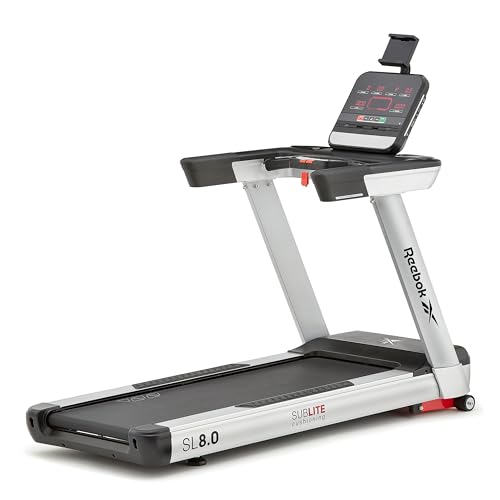A Journey Back In Time: How People Talked About Non-Folding Treadmill 20 Years Ago

The Allure of Treadmills Without Electricity: A Comprehensive Guide
In a world significantly controlled by high-tech physical fitness gadgets, the simpleness and usefulness of a treadmill that does not need electricity might appear like a throwback. However, treadmills without electricity-- frequently described as "manual treadmills"-- have acquired substantial popularity among fitness lovers looking for a more uncomplicated, eco-friendly workout alternative. This article explores the myriad benefits, functions, and factors to consider surrounding manual treadmills, as well as answering common concerns from potential purchasers.
What is a Manual Treadmill?
A manual treadmill is a piece of exercise equipment that permits users to stroll or run without requiring electrical power. As opposed to motorized treadmills that move the belt for you, manual treadmills rely on the user's own effort to move the belt forward. Here's a quick contrast in between manual and motorized treadmills:
| Feature | Manual Treadmill | Motorized Treadmill |
|---|---|---|
| Power Source | None | Electricity needed |
| Operative Mechanism | User-powered | Motor-driven |
| Cost | Generally more affordable | Typically more costly |
| Portability | Highly portable | Often heavier, less portable |
| Maintenance | Low | Needs more upkeep |
| Workout Intensity | Greater (more effort) | Can be adjusted |
Advantages of Using a Manual Treadmill
Cost-Effective:
- Manual treadmills are generally much more affordable than their electrical counterparts. With Manual Incline Treadmill and no continuous electricity expenses, these treadmills can be an excellent option for budget-conscious people.
Eco-Friendly:
- As there are no motors or electrical parts included, manual treadmills are a sustainable option. They don't take in nonrenewable fuel sources and leave a smaller carbon footprint.
Versatile Workout:
- Because they require the user to develop their own momentum, manual treadmills can provide more extreme exercises, perfect for those seeking to increase their endurance and strength.
Portability:
- Manual treadmills are often lighter and much easier to transport. They permit users to quickly save them away or move them from one area to another.
Minimized Risk of Injury:
- By allowing for a more natural running movement, manual treadmills can assist reduce the danger of injury compared to motorized alternatives. Users have control over their speed and can stop or slow down instantly.
Key Features to Consider
When thinking about a manual treadmill, certain features should be taken into account:
- Belt Quality: Look for a non-slip, durable surface area that provides adequate grip for security during workouts.
- Incline Levels: Many manual treadmills included adjustable incline features. Greater slopes can increase workout intensity.
- Dimensions: Space can be a limitation, so examining the treadmill's footprint is important.
- Weight Capacity: Always examine the manufacturer's weight recommendations to guarantee safety and longevity.
- Display Monitor: Some manual treadmills include basic displays for tracking elapsed time, distance, and calories burned.
| Function | Description |
|---|---|
| Belt Quality | Non-slip and long lasting materials for safety |
| Incline Levels | Adjustable settings for increased workout difficulty |
| Dimensions | Size and weight for ease of storage and transport |
| Weight Capacity | Make sure the treadmill accommodates the user's weight easily |
| Display Monitor | Optional efficiency tracking features |
Picking the Right Manual Treadmill
Given the range of manual treadmills offered on the market, picking the ideal one includes evaluating individual physical fitness objectives and requirements. Here's a streamlined list to guide consumers:
- Assess your physical fitness objectives: Are you going for weight reduction, endurance, or basic physical fitness?
- Think about the available area: Ensure the treadmill will fit well in your designated exercise location.
- Look for functions: Look for adjustable incline settings or included innovation such as a range tracker.
- Research brands and evaluations: Read about the experiences of other users to determine the dependability and sturdiness of the model you're considering.
- Set a budget: Compare different models while keeping your budget in mind.
Frequently Asked Questions (FAQ)
1. Are manual treadmills ideal for all fitness levels?
Yes, manual treadmills accommodate numerous physical fitness levels. Beginners can start at a slower pace, while advanced users can increase intensity and speed.
2. How do manual treadmills affect calorie burn as compared to motorized ones?
Manual treadmills may cause greater calorie burn during workouts, as users must exert more effort to move the belt.
3. Do I need to assemble a manual treadmill?
The majority of manual treadmills come partially assembled, however you'll likely require to finish some assembly depending upon the design.
4. Can I perform interval training on a manual treadmill?
Absolutely! Manual treadmills are excellent for interval training since users can easily change their pace and start/stopping movements.
5. How do I maintain a manual treadmill?
Maintenance is basic: routine cleaning of the belt and frame, looking for wear and tear, and guaranteeing empty storage when not in use.
Manual treadmills provide various benefits, making them an appealing alternative for numerous fitness enthusiasts. Their energy-efficient style, integrated with the capability to supply efficient exercises, has actually sealed their location in home fitness routines. With a clear understanding of their functions and advantages, individuals can make an educated decision about whether a manual treadmill is the best choice for their health journey.
The uncomplicated appeal of manual treadmills-- combined with their cost-effectiveness and sustainability-- ensures they remain relevant in today's fitness market, offering a compelling alternative to electric models.

